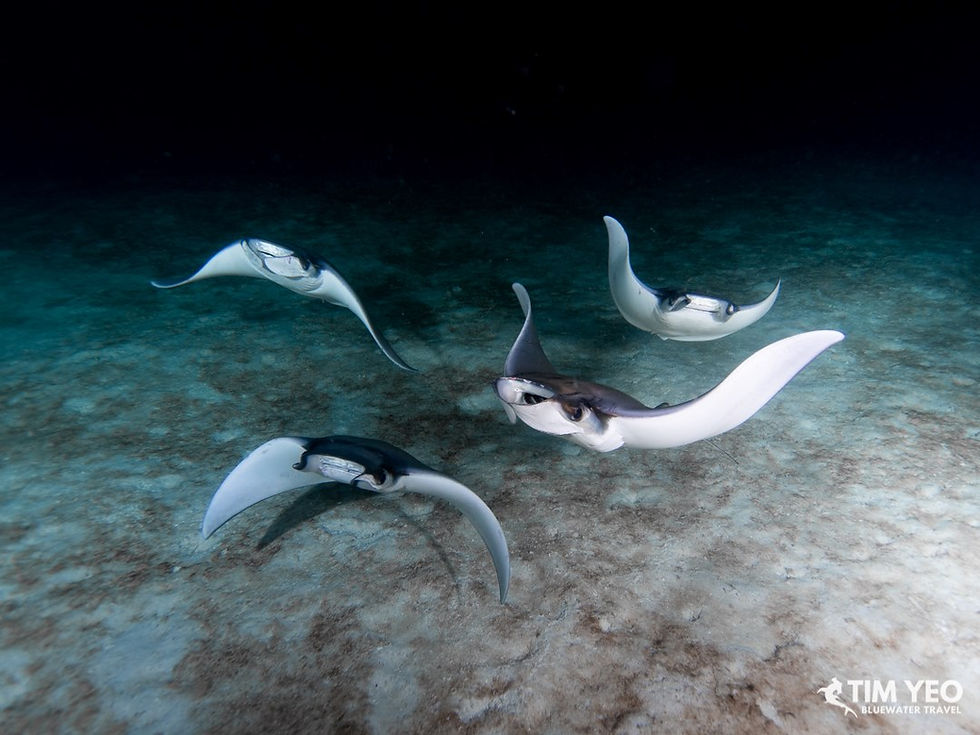A Guide to Night Diving | Scuba Diving Blog
- jenny56250
- Apr 28, 2023
- 3 min read
Updated: Jun 19, 2023

Night diving tends to be a polarizing subject in the scuba diving community – divers tend to either love night dives or hate them. Some divers just consider a night dive a take-it-or-leave-it add-on to their dive holidays, while others plan entire holidays to include as many night dives as possible. Other divers feel uneasy or afraid to dive into the darkness with only the beam of an underwater torch to light their way. Whatever our stance on night diving, it is undeniable that it is the only way to see certain nocturnal creatures and there are some spectacular sights to behold under the water after dark.
What is night diving?
Typically considered to take place anytime from dusk until dawn, night diving is exactly what it sounds like: scuba diving during dark hours. In addition to standard diving equipment, underwater lights (or torches) must be carried to illuminate the site throughout the dive and additional lights such as tank markers, boat lights, or shore lights are often needed. Night diving follows the same general procedures as daytime diving, however, there are some differences to hand signals, gauge monitoring, and torch etiquette.
Where is the best night diving?
With even the most mediocre reefs coming to life after sunset, there are many amazing night diving locations. Night dives can be done from many shore diving sites, depending on the conditions and ease of navigation, and are also included on many liveaboard itineraries. It’s best to only dive a site at night if you have already become familiar with it by diving it during the day, or by going with a reputable local guide. Due to the zero-visibility nature of night diving, look for sites with minimal or no current and a shallow reef or sandy bottom.
When is the best time to go night diving?
It depends what you want to see and what the conditions are like. If you are interested in witnessing the unique mating dance of mandarinfish, you’ll need to be in the water before sunset, as they come out just at dusk. When diving a location with resident populations of bumphead parrotfish, just before dawn is a great time to see them waking up in their protective bubbles. Check the conditions by consulting local tide charts and weather patterns before embarking on a night dive.
Why go night diving?
Night diving enables divers to experience a different world underwater. You can witness reef fish sleeping, sea urchins actively moving around, nocturnal animals such as harlequin shrimp, basket stars, and various species of shrimps, crabs, lobsters, nudibranchs, and more. Night diving is a valuable experience in improving your confidence as a diver by exposing you to zero visibility in a controlled environment. There is also a certain thrill involved in night diving, because everything outside of your torch beam is shrouded in complete darkness.
How to go night diving?
Talk to the experts at Bluewater Travel to help plan your next dive holiday and incorporate some incredible night dives into your itinerary. Make sure you feel confident when going for a night dive by choosing a reputable dive operator and dive guide, ensure your equipment is in proper working order, and invest in a good quality dive torch. Understanding how to use your equipment and exercising optimal buoyancy control are vitally important while night diving, so if you are an infrequent diver, plan to do a few daytime dives before joining a night dive.
Further Reading
Check out our Top 10 Night Dives here!
Read our tips for taking photos during night dives here.
Practice underwater photography during night dives at one of our photo workshops.






Comments